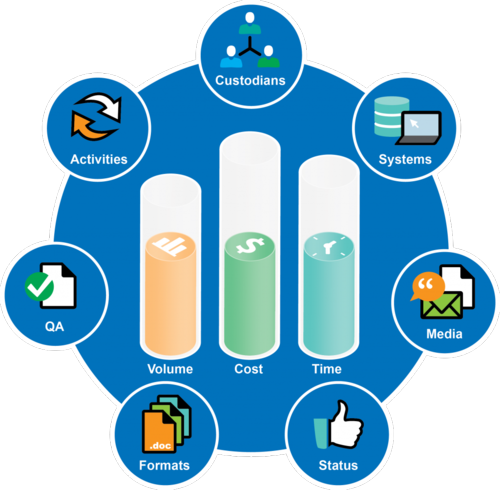The Ubiquitous Apple Samsung Case and “Patentgate” – eDiscovery Case Law

When something gets the “gate” suffix added to it, that’s not a good thing.
It’s hard to believe that a case can get more intense than when a billion dollar verdict is awarded (later reduced to a measly $599 million), but the Apple v. Samsung case seems to only be getting more intense, due to the disclosure of confidential agreements that Apple had with Nokia, Ericsson, Sharp and Philips – now widely referred to as “patentgate”.
Here is a summary of events as they are described in California Magistrate Judge Paul S. Grewal’s Order from October 2 regarding Apple’s motion for sanctions (which Nokia joined):
“During the massive fact discovery in this case between August 2011 and March 2012, Apple produced copies of a number of its patent license agreements, including a June 2011 license between Apple and Nokia. Apple marked the Apple-Nokia license as “Highly Confidential —Attorney Eyes’ Only” as permitted by the court’s protective order. Apple also produced and marked as “Highly Confidential —Attorney Eyes’ Only” similar patent license agreements it has reached with Ericsson, Sharp, and Philips.”
“As fact discovery transitioned to expert discovery, on March 24, 2012, Samsung’s outside counsel sent Samsung a draft expert report by Dr. David J. Teece. Dr. Teece’s report concerned damages to be awarded for Apple’s alleged infringement of Samsung’s asserted declared-essential patents. Because it addressed highly confidential, attorneys’ eyes only information, the report should have been fully redacted of that information before it was sent. However, intentionally or inadvertently, it was not. The report as distributed included key terms of each of the four Apple license agreements.”
“Samsung’s outside counsel [Quinn Emanuel Urquhart & Sullivan LLP] posted the report on an FTP site that was accessible by Samsung personnel. An email providing instructions to access the FTP site was addressed to the regular client distribution list used by counsel to provide Samsung personnel updates regarding this case. The information was then sent, over several different occasions, to over fifty Samsung employees, including high-ranking licensing executives. Specifically, on at least four occasions between March 24, 2012 and December 21, 2012, Samsung’s outside counsel emailed a copy of some version of the report to Samsung employees, as well as various counsel representing Samsung in courts and jurisdictions outside the United States.”
“At this point, things get murky. According to a declaration from Nokia’s Chief Intellectual Property Officer, Paul Melin, on June 4, 2013, in a meeting between Samsung and Nokia licensing executives, Dr. Seungho Ahn informed Nokia that the terms of the Apple-Nokia license were known to him. Specifically, according to Mr. Melin, Dr. Ahn stated that Apple had produced the Apple-Nokia license in its litigation with Samsung, and that Samsung’s outside counsel had provided his team with the terms of the Apple-Nokia license. Mr. Melin recounts that to prove to Nokia that he knew the confidential terms of the Apple-Nokia license, Dr. Ahn recited the terms of the license, and even went so far as to tell Nokia that “all information leaks.” Mr. Melin also reports that Dr. Ahn and Samsung then proceeded to use his knowledge of the terms of the Apple-Nokia license to gain an unfair advantage in their negotiations with Nokia, by asserting that the Apple-Nokia terms should dictate terms of a Samsung-Nokia license.”
Over the next few weeks, Samsung appealed the order to District Judge Lucy Koh, who was even more critical, finding the disclosures “improper” and Samsung’s lack of cooperation “inexcusable”. A couple weeks later, Samsung provided sworn declarations, including one by Dr. Ahn that strongly contradicted Nokia’s representation of the June meeting. At a follow up hearing, Judge Grewal said he was not yet convinced that sanctions were warranted, ordering an “in camera” review of documents that Samsung claimed as privileged which Apple doubted that they were legitimately withheld from its lawyers.
As for Quinn Emanuel, who is also facing potential sanctions, partner John Quinn acknowledged the inadvertent disclosure, which was apparently due to an associate at the firm failing to obscure a footnote and two paragraphs while performing a digital redaction of the 150-page report and announced the creation of a new document retention policy to provide a “second pair of eyes” and avoid similar errors in the future (as reported by IT-Lex)
This past Friday, Judge Grewal ordered Samsung and Quinn Emanuel to show cause why they should not be sanctioned, stating “Having finally crawled out from under the boxes, it appears to the undersigned that if anything was breached, it was this court’s protective order, and that sanctions against Samsung and its attorneys are warranted”. However, he gave Samsung one last chance to defend its actions ordering Samsung to file a brief by December 2 to explain why it should not be sanctioned, while also allowing Apple and Nokia to file a brief to propose appropriate sanctions, with a hearing on the matter set for December 9.
It will be interesting to see what transpires from here. There have been at least 31 court filings so far this year in this case, so it looks like they’re just getting warmed up.
So, what do you think? Are Quinn Emanuel and Samsung in serious trouble? Please share any comments you might have or if you’d like to know more about a particular topic.
Disclaimer: The views represented herein are exclusively the views of the author, and do not necessarily represent the views held by CloudNine Discovery. eDiscoveryDaily is made available by CloudNine Discovery solely for educational purposes to provide general information about general eDiscovery principles and not to provide specific legal advice applicable to any particular circumstance. eDiscoveryDaily should not be used as a substitute for competent legal advice from a lawyer you have retained and who has agreed to represent you.






